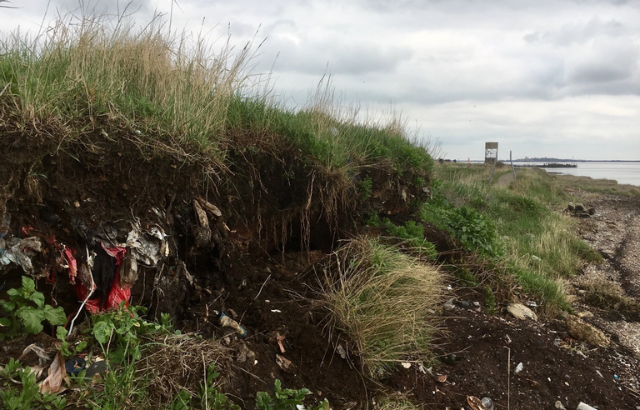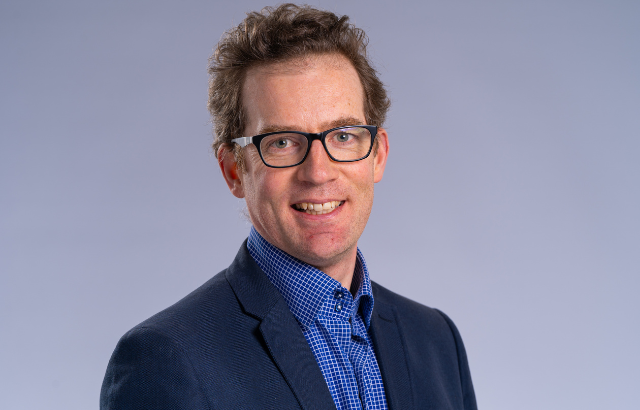New study reveals lower energy limit for life on Earth
An international team of researchers led by Queen Mary University of London have discovered that microorganisms buried in sediment beneath the seafloor can survive on less energy than was previously known to support life. The findings have implications for understanding the limit of life on Earth and the potential for life elsewhere.

Marine sediments that cover the seafloor are estimated to contain an abundance of life. Image credit: Jefferey Marlow, Boston University
The study, published in the journal Science Advances, uses data from the sub-seafloor to construct innovative models that divide the oceans into hundreds of thousands of individual grid cells. A global picture of the sub-seafloor biosphere was then assembled, including key lifeforms and biogeochemical processes.
Since the discovery of the ‘deep biosphere’ in the 1990’s, scientists have explored Earth’s subsurface to reveal the extent and characteristics of life within it. Drills are used to penetrate deep into ocean basement rock. Samples are then brought to Earth’s surface and analysed using gene sequencing and microscopy techniques to detect and characterize lifeforms. Surprisingly, scientists have detected life in almost every sample analysed from deep ocean sediments.

Photographs taken from ALVIN, a manned deep-ocean research submersible, taking sediment cores at the ocean floor of the Dorado Outcrop in 2014. Credit: Geoff Wheat, NSF OCE 1130146, and the National Deep Submergence Facility.
Understanding how energy is used to support life
By combining data on the distribution and amounts of carbon and microbial life contained in Earth’s deep biosphere with the rate of biological and chemical reactions, the researchers were able to determine the ‘power’ consumption of individual microbial cells – in other words – the rate at which they utilize energy. All life on Earth constantly uses energy in order to remain active, sustain metabolism, and carry out essential functions such as growth, and the repair and replacement of biomolecules.
The results show that sub-seafloor microbes survive using far less energy than has ever previously been shown to support any form of life on Earth. By stretching the habitable boundaries of life to encompass lower energy environments, the findings could inform future studies of where, when and how life arose on a hostile early Earth, and where life might be located elsewhere in the solar system.
Implications for life elsewhere in the solar system
Dr James Bradley, Lecturer in Environmental Science at Queen Mary said: “When we think about the nature of life on Earth, we tend to think about the plants, animals, microscopic algae, and bacteria that thrive on Earth’s surface and within its oceans – constantly active, growing and reproducing. Yet here we show that an entire biosphere of microorganisms – as many cells as are contained in all of Earth’s soils or oceans, have barely enough energy to survive. Many of them are simply existing in a mostly inactive state – not growing, not dividing, and not evolving. These microbes use less energy than we previously thought was possible to support life on Earth.
“The average human uses around 100 watts of power – meaning they burn approximately 100 joules of energy every second. This is roughly equivalent to the power of a ceiling fan, a sewing machine, or two standard lightbulbs. We calculate that the average microbe trapped in deep ocean sediments survives on fifty-billion-billion times less energy than a human.”
Jan Amend, Director of the Center for Dark Energy Biosphere Investigations (C-DEBI) at the University of Southern California, and co-author of the study, said: “Previous studies of life in the subseafloor – and there have been many good ones – focused predominantly on who’s there, and how much of it is there. Now we’re digging deeper into ecological questions: what is it doing, and how fast is it doing it? Understanding the power limits of life establishes an essential baseline for microbial life on Earth and elsewhere.”
Questions raised about what constitutes life
The findings raise fundamental questions about our definitions of what constitutes life, as well as the limits of life on Earth, and elsewhere. With such little energy available, it is unlikely that organisms are able to reproduce or divide, but instead use this miniscule amount of energy for ‘maintenance’ – replacing or repairing their damaged parts. It is likely, therefore, that many of the microbes found at great depths beneath the seafloor are remnants from populations that inhabited shallow coastal settings thousands to millions of years ago.
Unlike organisms on the surface of Earth, which operate on short (daily and seasonal) timescales according to the Sun, it is likely that these deeply buried microbes exist on much longer timescales, such as the movement of tectonic plates, and changes in ocean oxygen levels and circulation.
The research also sheds light on how the microbes interact with chemical processes occurring deep below the seafloor. Whilst oxygen provides the highest amount of energy to microbes, it is in overwhelmingly short supply – present in less than three per cent of sediments.
Potential for life on other planets
Sediments without oxygen, however, are far more widespread, often containing microorganisms that obtain energy by generating methane – a potent greenhouse gas. Despite being practically inactive, the microbial cells contained in Earth’s marine sediments are so numerous, and survive over such extraordinarily long timescales, that they act as an important driver of earth’s carbon and nutrient cycles – even affecting the concentration of carbon dioxide in earth’s atmosphere over thousands to millions of years.
“The findings of the research call into question not just the nature and limits of life on Earth, but elsewhere in the Universe,” added Dr Bradley. “If life does exist on Mars or Europa for example, it would most likely take refuge in the subsurface of these energy-limited planetary bodies. If microbes only need a few zeptowatts of power to survive, there could be remnants of extant life, long dormant but still technically ‘alive’, beneath their icy surface.”
Despite being cast in persistent darkness, cut off from most nutrient sources, and subjected to extreme heat and pressure, Earth’s subsurface is estimated to contain an abundance of life. An estimated 15 to 23 billion tonnes of microorganisms live here - hundreds of times the combined weight of every human on the planet. Marine sediments that cover the seafloor contain a significant portion of this deep life.
More information
- Study Environmental Science at Queen Mary
- Read more about Queen Mary's School of Geography.
Related items

10 December 2024

13 November 2024

28 August 2024
For media information, contact: